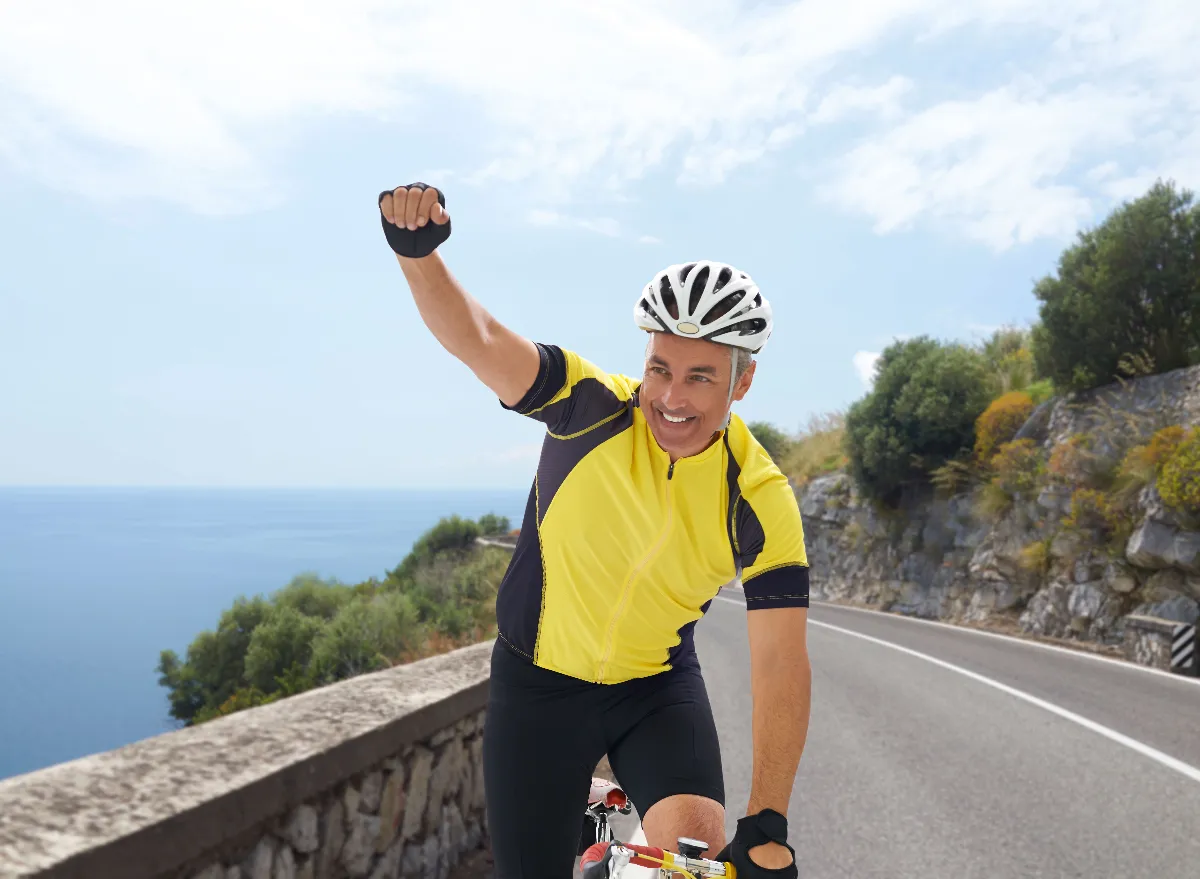The Cycling Habits That Slow Aging, According to Science
One of the best ways to fill up your leisure time is by having fun in the good ol' outdoors. Now if you can fill up that "fun" time with something physical and healthy, all the better. One exhilarating choice is to hop on a bike and hit the trails. Not only is bicycling a very popular sport, but it also provides an incredibly healthy workout with fewer injuries and less strain than many other forms of exercise, according to the University of Montana. Riding on a bike trail is a perfectly healthy activity that'll keep you feeling young. If this intrigues you, keep reading to learn more about the cycling habits that slow aging.
Cycling is a low-impact workout that works wonders for your mental wellness.
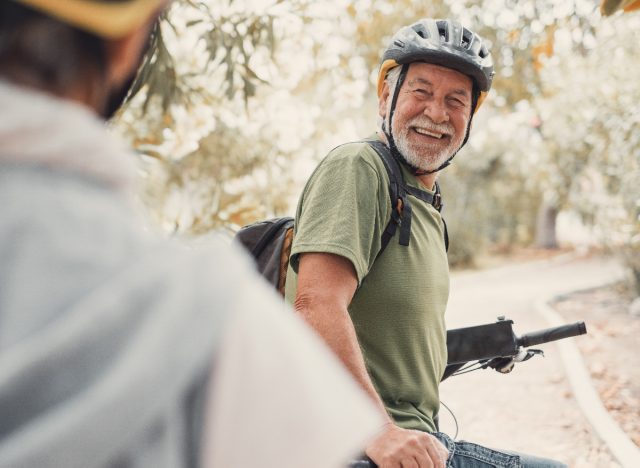
Cycling is an aerobic workout that provides numerous mind and body benefits. According to Jaclyn Kubiak, PT, DPT, "One of the major benefits of cycling is that it's low-impact." In an interview with Celebwell, Kubiak explains, "It's been shown that cycling reduces anxiety and depression. Mainly, because you can make it fun. You get the added benefit of being outdoors or you can go do it with friends. You can change the intensity for it yourself."
Biking is an activity that's so easy to weave into your daily routine. It's a very social thing to do, and it's something that'll get you outside for a healthy workout. A study even showed that individuals dealing with depression who exercised on a stationary bike for 15 minutes reaped positive mental health benefits—their cortisol (stress hormone) level dropped.
Related: The Top 5 Walking Habits That Slow Aging, Fitness Expert Reveals
Every bit of time spent on your bike will check healthy aerobic movement off your list.
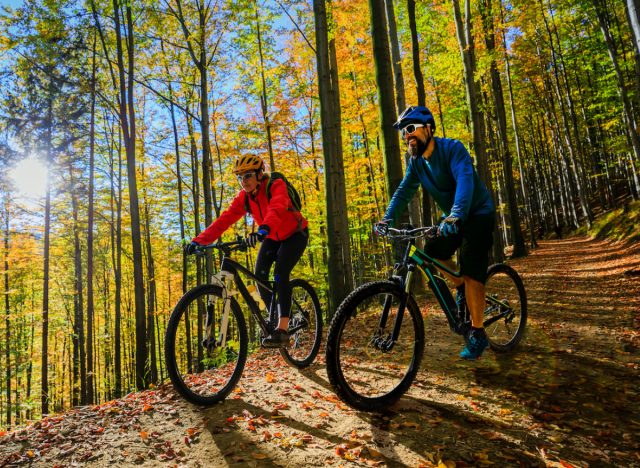
Next up on the cycling habits that slow aging has to do with getting in a healthy dose of aerobic exercise. Although you can easily bike at your own pace, it's recommended that adults perform 2 hours and 30 minutes of moderately intense aerobic exercise or 1 hour and 15 minutes of vigorous aerobic exercise every week. Why is getting in weekly aerobic exercise so important? Well, for one, studies have linked aerobic exercise to enhancing cognition and decreasing brain atrophy among older individuals.
Every bit of time spent on your bike will check healthy aerobic movement off your list—even if you just head out to do a few errands. Pedaling up some miles will help to strengthen your heart, lungs, and blood vessels while burning some serious calories, which brings us to our next point!
Related: The #1 Floor Workout To Lose Belly Fat and Slow Down Aging, Says Trainer
You'll burn some serious calories while cycling.
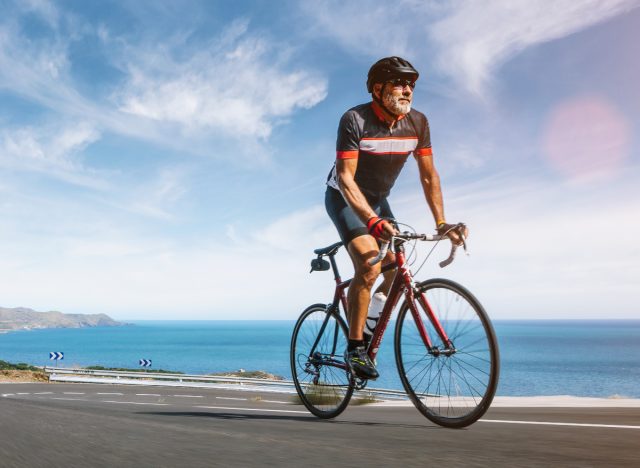
How much you burn will reflect what you weigh, in addition to how fast and intensely you are pedaling. For instance, according to Harvard Health Publishing, a person who weighs 125 pounds and rides for ½ hour will burn around 240 calories if they maintain a speed of 12 to 13.9 mph. That same person will burn 300 calories if they maintain a speed of 14 to15.9 mph and a whopping 495 calories if biking at a speed of 20 mph or faster. For someone who weighs 185 pounds riding the same amount of time, it's estimated they'll burn off 336 calories if riding 12 to 13.9 mph. See how motivating it is? The more you pedal, the more you'll burn!
Cycling will help enhance your balance, coordination, and strength.
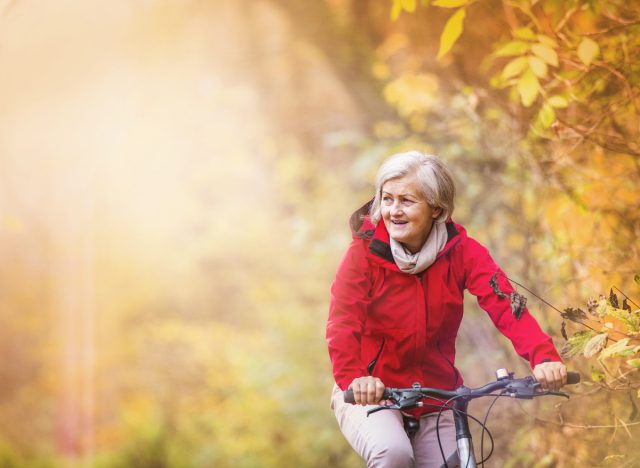
Want to learn more about the healthy rewards you'll reap if you start to regularly hit up a bike trail? For one, you can greatly enhance your balance, coordination, and strength, according to Better Health Channel. Science backs this up with a study revealing cycling for a minimum of one hour every week is linked to substantially better balance.
In addition, going out for a cycling adventure could help you avoid fractures. Oh, and this kind of workout doesn't place a lot of stress on your joints!
Cycling is a hobby you can truly enjoy throughout your entire life.
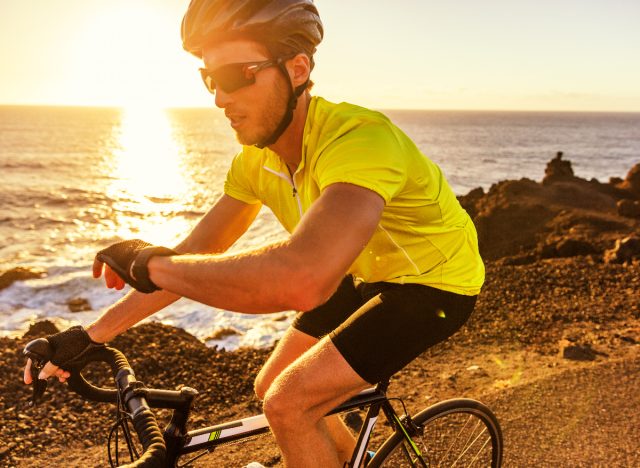
Cycling is a hobby you can truly enjoy throughout your life. And, unlike other forms of exercise, you can really look forward to making your plans as special as you'd like them to be. Whether or not you choose to go bicycling aggressively, the activity always proves to be enjoyable. There are many bike trails at various levels all over the country. Start small in and around your neighborhood and town, and work your way up!
Before you get started, be sure you are taking every safety precaution. Dr. Clare Safran-Norton, a physical therapist at Harvard-affiliated Brigham and Women's Hospital, recommends speaking with a medical professional before starting to bike—most especially if you have brittle bones, arthritis, or heart disease (via Harvard Health Publishing). Dr. Safran-Norton suggests, "If you have osteoporosis, consider riding a tricycle, which is more stable than a two-wheeler, posing less of a fall risk," and warns, "Don't ride a bike at all if you've had a recent fracture. Another fall could make it worse."
In addition, always wear a helmet, make sure your bike is the right size for you and in good working order, and pay close attention to any traffic signs while riding. Be sure to apply sunscreen, bring a water bottle along so you stay hydrated, and put your pedal to the metal!
